5G Transformation Hub
5G enables the preservation of Cologne Cathedral with digital twins
5G connectivity was used alongside MEC (Multi-access Edge Computing) to support the deployment of a digital twin of Cologne Cathedral using virtual reality to analyse every detail of restoration work required on the cathedral.
The process included capturing images of the cathedral using drones and creating a 3D digital twin model for the location. Expert stonemasons were then able to navigate the digital twin using 5G-connected virtual reality (VR) technologies to view the structure in detail from perspectives that may previously have been impossible.
Select a project
Contents
Challenge
The main challenge was to efficiently deploy the highly detailed digital twin model to mobile VR Headsets, which on their own would not be able to handle the 50GB data model representing a digital twin of the cathedral. Until the advent of 5G users required high-performance stationary computers on-site to process the massive amounts of data needed to display the model in real-time VR.
Solution
Northdocks used Vodafone’s 5G connectivity and MEC servers for faster data transfer and processing of its images, enabling the graphically demanding application to be rendered remotely with only a video feed being sent to the VR device. The proposition is an upgrade over previous 4G cellular network infrastructure that could not process such a large amount of data over the network, resulting in compression artifacts and lag in the video feed. New 5G capabilities enable employees to view newly recorded images and the developing digital twin locally on-site, benefitting from smooth image rendering and interaction.
Impact & Statistics
Using 5G enables the stonemasons to use mobile VR headsets rather than having to rely on on-site high-end image-rendering hardware. This makes viewing the 3D model considerably more accessible. It also reduces the cost of implementing a new viewing device from approximately EUR3,000 for a gaming PC and VR headset to approximately EUR500 for only a mobile headset. This makes collaboration in VR (for instance, viewing the model in a multi-user setting) more affordable and easier to implement.
Wider Implications
Virtual reality has become a key tool not only for enhancing user experience, but also for interaction and engagement with objects and parts of buildings that would otherwise be hard to view. Meanwhile, the demand for using VR glasses in enterprise contexts will grow as the use of digital twin technologies increases in multiple industries such as construction (restoring, building and refurbishing old and new sites), manufacturing (recreating a plant remotely), the service sector (virtual training and meetings) and other similar roles and services.
Stakeholders
AWS, Northdocks, Vodafone.
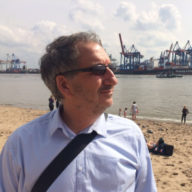
Michael Jürkel
Stone technician at the Cologne Cathedral workshop
02
5G enables preservation of Cologne Cathedral with digital twins
Creating a digital twin of Cologne Cathedral
In 2020 the west facade of Cologne Cathedral was captured for a realistic 3D visualisation using drone-based technology. The recordings were intended to help the employees of the Dombauhütte (responsible for the preservation of the cathedral) to better monitor areas of the building that are difficult to access and to detect damage at an early stage.
Previously examining complex structures such as Cologne Cathedral for damage required the erection of complex scaffolding, which is a lengthy and expensive task. However, drones have been increasingly used at the cathedral with the first test recordings with unmanned flying drones from Northdocks made in the autumn of 2019.
As an unexpected benefit of the Coronavirus pandemic, Dombauhütte Cologne took advantage of the fact that the immediate area around the cathedral was far less frequented than usual due to the pandemic regulations of the city of Cologne. "This makes it possible to block off a small part of the cathedral platform in front of the west facade of the cathedral so that the drone pilots can concentrate on working on the cathedral towers from there," said Michael Jürkel, stone technician at the Cologne Cathedral workshop. Pilots carefully guided the drone at a distance of five to seven meters along walls, towers, peaks, ornaments and figures – sometimes to where no one had been for a century and a half.
To support the creation of a digital twin of Cologne Cathedral Northdocks pilots undertook over 350 of hours pure flight time. A high level of precision and concentration is required since the more attentively pilots can control the drones fitted with high-resolution cameras, the lower the post-processing overhead and the greater the benefit for the stone technicians who will ultimately use the digital twin, since the resulting 3D model allows more precise mapping of damage. As part of the work, the manually controlled special drone covered the towers and west facade of the cathedral in more than 400,000 high-resolution images ultimately combined into a 50GB data model. With 35 billion polygons, the virtual twin of bits and bytes looks as real to the viewer as the original building made of stone. As of today, Northdocks has captured and processed the complete cathedral from the outside as well as the most significant indoor areas using a combination of drones, laser scanning and handheld cameras.
Now everyone who wears VR glasses to view the digital twin thinks they are standing in front of the building at an astonishing height. The technology can deliver a very detailed and accurate replica of the original building allowing cathedral employees to spot even the smallest restoration needs based on the detailed digital twin. It can also support an enhanced viewing experience for tourists, extending to untouched and usually inaccessible spaces. Ultimately, this may help the future tasks of general maintenance workers, fire inspectors and firefighters as the digital twin would help in the identification of critical areas.
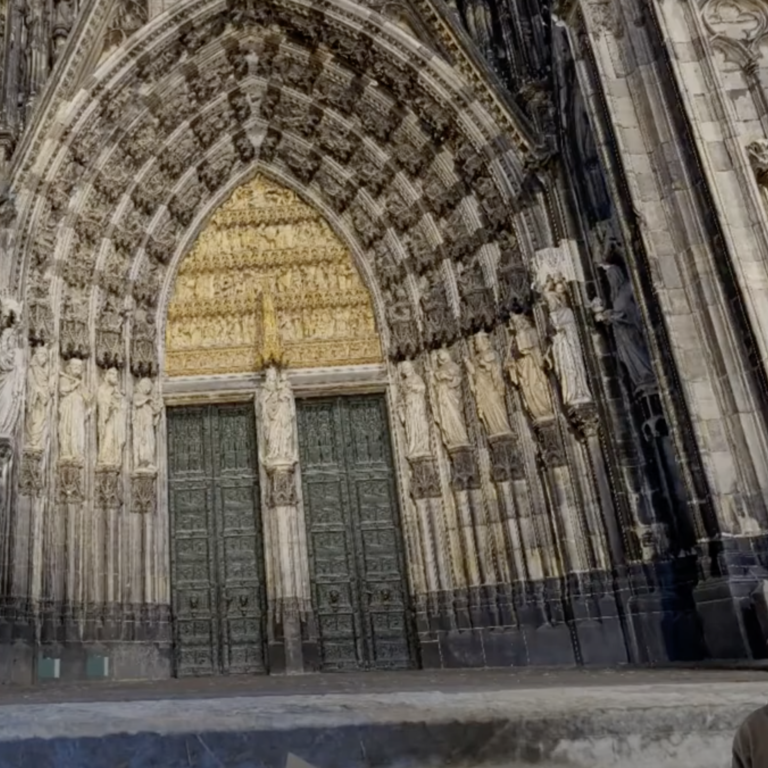
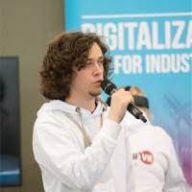
Silas Fuchs
Northdocks Director
03
5G is a critical enabling technology
Transferring data over the cellular network at the required data rates so that employees in the field could view such a digital twin was difficult and nearly impossible in the past, mainly due to constrained bandwidth and high latency.
For the deployment of the digital twin of Cologne Cathedral, Northdocks adopted Vodafone’s 5G Edge solution combined with AWS Wavelength. In combination these technologies better enabled the company to handle significant data volumes, while enabling the company to provide more and better real time data, statistics and analysis for remote employees.
With higher bandwidth 5G connectivity and local processing supported by MEC the digital twin can be rendered remotely, while still displaying even the smallest of details at across the cathedral. The full value of digital twin data can only be unlocked when it is highly accurate, precise, and timely, so underlining the advantages of 5G and MEC.
A particular benefit is that the Cologne Cathedral project makes use of public 5G cellular networks for connectivity, allowing for flexibility in deployment of this and future projects; saving deployment time and cost and reducing complexity. Additionally, the use of public 5G networks allows on-site workers to access the digital twin of the cathedral more easily given the ready availability of high-speed connectivity services. In particular, when viewing a digital twin, 5G is critical in reducing lag that may be apparent with previous cellular generations. Even small lags between user movements and the movement of a VR image can very quickly make those users feel nauseous but the bandwidth and latencies supported by 5G and MEC allow for smooth interaction between users and the digital twin.
Since access to the digital twin technology relies on public 5G network connectivity, the digital twin of Cologne Cathedral can be viewed by anyone connected to the public 5G network. This allows for sophisticated hybrid working models, with different users in different geographic locations able to view and discuss the same images in real time. This flexibility further enhances the potential of the digital twin image to be used for training and sharing best-practices between stonemasons, including those working on the Cologne Cathedral project and those working on other renovation projects. In particular, the 5G-enabled access model allows for each escalation of any particularly complex renovation challenges to appropriate supervisors or simply more experienced stonemasons. Such escalation process can be quick, simple, and seamless.
The fact that users of the VR headsets are in fact viewing video feeds that have been generated remotely (rather than a local copy of the digital twin) allows the solution to be deployed with a minimum of on-site equipment, further increasing flexibility and reducing costs. This approach also enhances security, since any potentially sensitive information contained in a digital twin remains safely stored on cloud infrastructure with no local copies that could potentially represent a security risk. Meanwhile, any updates to the digital twin can be processed and implemented quickly and easily to the single shared digital twin, rather than requiring coordinated propagation across an estate of multiple local digital twins.
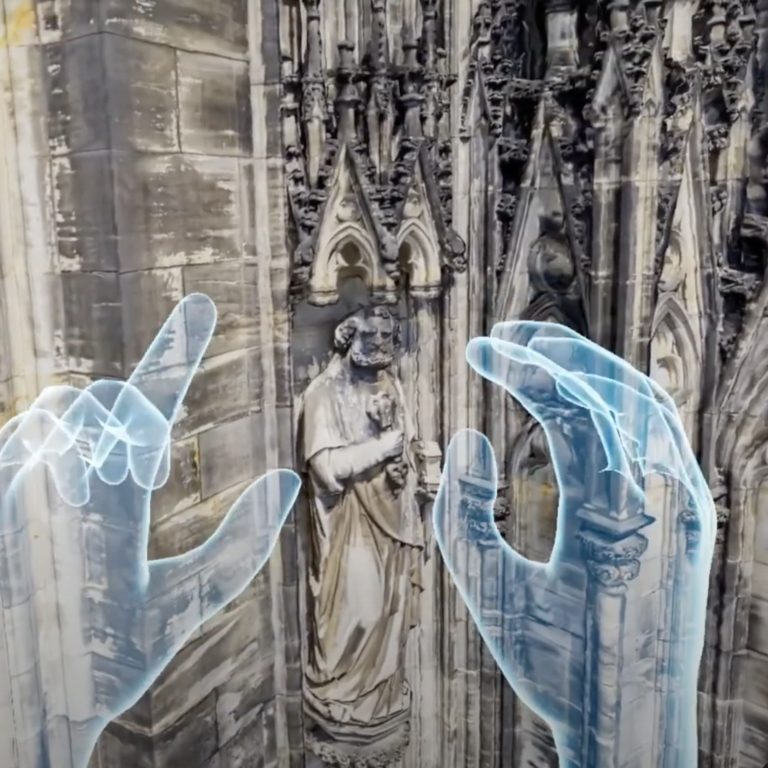
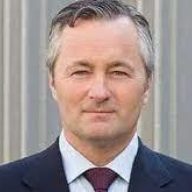
Hannes Ametsreiter
President of Vodafone Germany
04
Next steps
The digital twin of Cologne Cathedral must be updated over time as works are undertaken and to support the ongoing prioritisation of renovation work.
In cases where expert stonemasons and restoration workers need further information about a particular aspect of the cathedral as part of the ongoing works, this information can be gathered with drones and used to augment the existing digital twin information. Thus, the digital twin of Cologne Cathedral will become a living thing that is updated over time.
Beyond the restoration process, the gathered imagery can be used to support an enhanced visitor experience, allowing close-up viewing of walls, towers, peaks, ornaments and figures, and potentially from remote locations.
Additionally, the 5G-enabled approach to deploying digital twins as demonstrated by Northdocks with Cologne Cathedral is well suited to the use of digital twins of a range of industrial locations and complexes. This is particularly the case where site owners are sensitive to security and the potential for image information to be compromised. By its nature, the 5G-based solution used to support the digital twin of Cologne Cathedral does not require the storage of any 3D models on the mobile devices used in the field: information is transmitted directly to individual display devices via video feed only, while the 3D geometry remained safely on a central server PC. An alternative approach that does not use 5G would likely result in extensive geometry information being stored (at least temporarily) on mobile devices, sometimes overflowing their storage capacities while also creating potentially significant security risks.
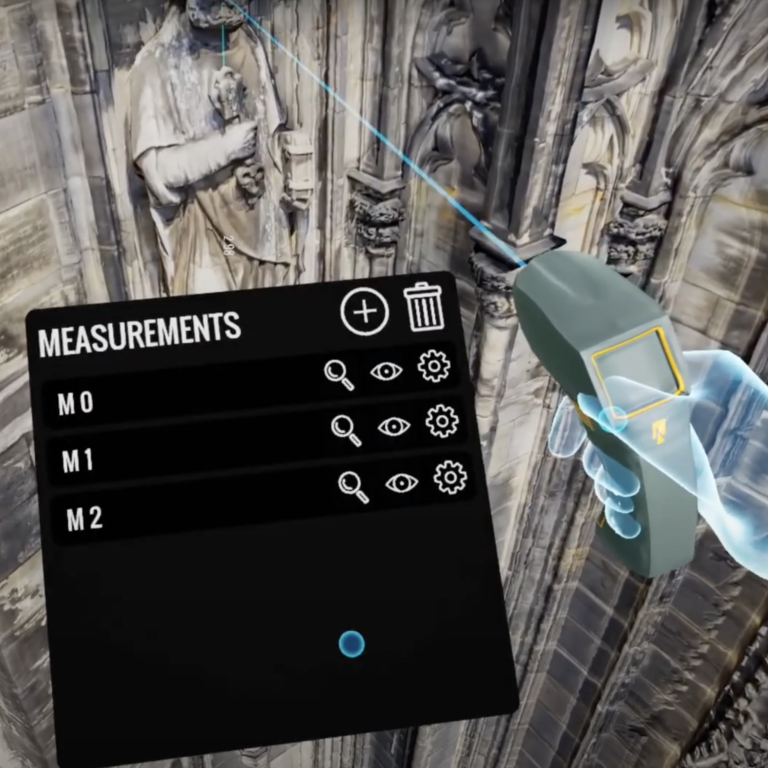

Sebastian Drech
Director of AWS
05
About
About the GSMA
The GSMA is a global organisation unifying the mobile ecosystem to discover, develop and deliver innovation foundational to positive business environments and societal change. Our vision is to unlock the full power of connectivity so that people,
industry, and society thrive. Representing mobile operators and organisations across the mobile ecosystem and adjacent industries, the GSMA delivers for its members across three broad pillars: Connectivity for Good, Industry Services and Solutions, and Outreach. This activity includes advancing policy, tackling today’s biggest societal challenges, underpinning the technology and interoperability that make mobile work, and providing the world’s largest platform to convene the mobile ecosystem at the MWC and M360 series of events.
For more information, please visit the GSMA corporate website at www.gsma.com.
Follow the GSMA on Twitter: @GSMA.
GSMA 5G Transformation Hub
The GSMA 5G Transformation Hub is a source of information on some of the most innovative 5G solutions in the world. This portal contains case studies detailing design, benefits, key players, measured value and the future impact of scaling up these 5G solutions worldwide. The 5G Era is now firmly established and this family of standardised GSM technologies, including mmWave, are being rolled out successfully across the globe. The GSMA 5G Transformation Hub, launched at MWC Barcelona in 2022, provides details of how 5G is best placed to deliver real value for a range of key sectors including manufacturing, energy, transportation, media and live entertainment, smart cities and construction.. Many more case studies will be added, in the coming months, covering even more industries and the GSMA is asking Members to nominate innovative 5G case studies to add to this global digital showcase. The 5G Transformation Hub and this particular Case Study are both sponsored by Qualcomm.
About this case study
This case study is for information only and is provided as is. The GSM Association makes no representations and gives no warranties or undertakings (express or implied) with respect to the study and does not accept any responsibility for , and hereby disclaims any liability for the accuracy or completeness or timeliness of the information contained in this document. Any use of the study is at the users own risk and the user assumes liability for any third party claims associated with such use.